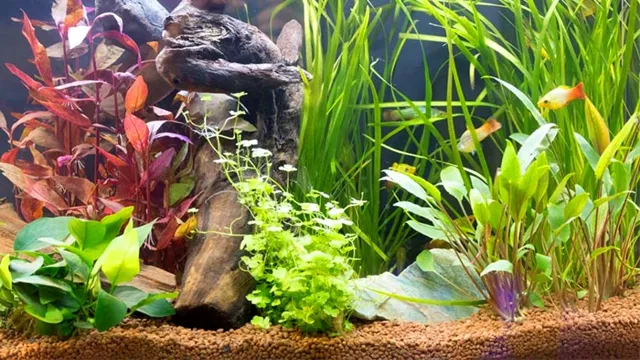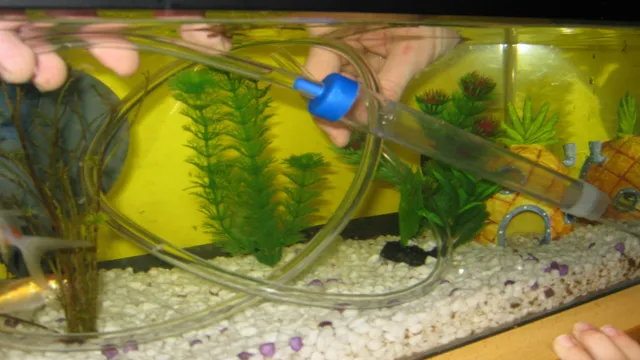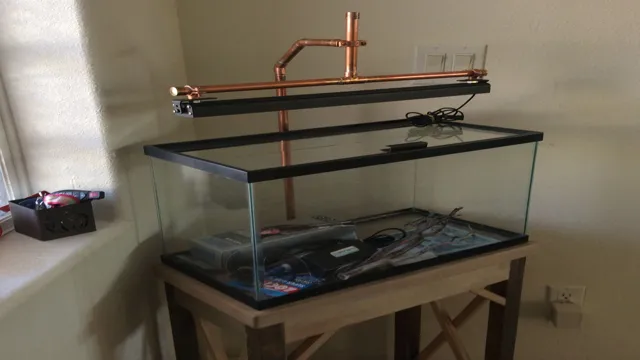How to Put Decorative Coral in a Salt Water Aquarium: A Beginner’s Guide
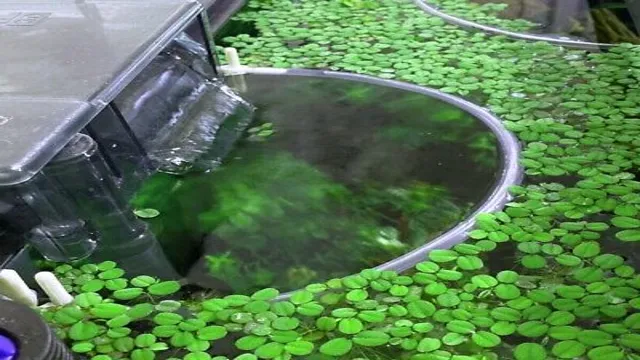
Decorative Coral in Saltwater Aquariums: A Guide As a saltwater aquarium owner, you understand the importance of adding some life and color to your tank. One of the most popular ways to achieve this is by incorporating decorative coral. Not only do corals enhance the visual appeal of your aquarium, but they also offer a variety of benefits to the health of your aquatic pets.
But with so many species of corals to choose from, it can be overwhelming to decide which ones are best suited for your tank. That’s where this guide comes in! We’ll delve into the different types of decorative corals, their unique characteristics, and the care they need to thrive in your aquarium. From soft corals that sway gently in the water to hard corals that provide striking textures, we’ll explore the diverse range of options available to you.
You’ll also learn about the ideal lighting, water parameters, and placement to keep your corals healthy and vibrant. Whether you’re a seasoned aquarium veteran or just starting out, this guide will provide you with the knowledge you need to create a stunning and thriving aquatic environment. So why wait? Let’s dive in and explore the fascinating world of decorative coral in saltwater aquariums!
Understanding Decorative Coral
If you are looking to add some color and texture to your saltwater aquarium, adding decorative coral can be a great option. However, it’s important to understand the types of coral and how to properly place them in your tank. For example, you should avoid adding live coral unless you are experienced in caring for them, as they require specific lighting and water conditions to thrive.
Instead, opt for artificial coral that is designed for aquarium use. When placing decorative coral, consider the overall aesthetic you want to achieve and try to create a natural-looking reef structure. Be careful not to overcrowd your tank, as this can lead to poor water quality and stressed fish.
Overall, with a bit of research and a careful eye, adding decorative coral can be a beautiful addition to your saltwater aquarium.
Different Types of Decorative Coral
Decorative coral is a beautiful addition to any aquatic-themed decor. There are various types of decorative coral that you can choose from to add a pop of color, texture, and natural flair to your space. Soft coral and hard coral are the two main categories of decorative coral.
Soft coral includes sea fans, sea whips, and sea feathers that have a soft texture and add a delicate touch to any setting. On the other hand, hard coral includes brain coral, staghorn coral, and table coral. They are sturdier and have a more defined surface structure, adding a bold and unique look to your decor.
It’s essential to note that while decorative coral is stunning, it’s crucial to purchase it ethically. Some types of coral are endangered, and you must buy them from sustainable sources that don’t harm natural coral reefs. With a little research and the right care, decorative coral can be a perfect addition to your decor that will last for years.
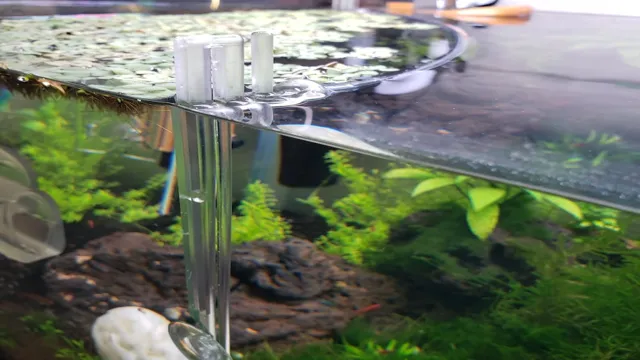
Pros and Cons of Using Decorative Coral in Your Aquarium
Decorative coral has gained immense popularity in the world of aquarium enthusiasts due to its aesthetic appeal. It can elevate the appearance of your aquarium, making it look more attractive and appealing. However, before adding decorative coral to your aquarium, it is essential to understand its pros and cons.
One of the most significant advantages of using these corals is their aesthetic appeal. They come in a wide range of colors and shapes, allowing aquarium hobbyists to create unique and visually stunning displays. Another advantage of using decorative corals is that they can provide a natural habitat for your fish, invertebrates, and other aquatic animals.
On the other hand, one of the main drawbacks of incorporating decorative coral is that you need to be extremely careful when handling it. Coral is delicate and fragile, and if you mishandle it, it can harm both the coral and your aquatic inhabitants. Additionally, decorative coral can change the chemistry of your aquarium water, which can have significant implications for your fish and other marine creatures.
In conclusion, using decorative coral in your aquarium can enhance its appearance and provide a natural habitat for your aquatic pets. However, it is crucial to be mindful of its advantages and disadvantages before adding it to your aquarium.
Preparing Your Aquarium for Decorative Coral
If you’re considering adding decorative coral to your saltwater aquarium, there are a few things you should consider before doing so. First and foremost, you’ll want to make sure your aquarium is ready to accommodate the new addition. This means ensuring the water quality is optimal, the temperature is stable, and proper lighting is in place.
Once you’ve checked these boxes, you can begin to acclimate your coral to the tank environment by slowly introducing it over a period of several weeks. It’s also important to ensure that the type of coral you choose is compatible with your other aquatic life, as aggressive or territorial species can harm other creatures sharing the space. By taking these steps and carefully monitoring your aquarium, you can safely add stunning decorative coral to your aquatic home.
Choosing the Right Saltwater
Choosing the right saltwater is essential when preparing your aquarium for decorative coral. Saltwater is a crucial component in the life of marine creatures, including coral. It determines their metabolic process, growth, and coloration.
As a result, it is critical to ensure that you have the appropriate saltwater before introducing your coral. The type of saltwater you choose can impact your coral’s overall health and appearance, so it’s essential to understand the difference between synthetic and natural seawater. While synthetic seawater is easier to prepare and maintain, natural seawater is more beneficial to marine life.
With natural seawater, you can avoid any potential contamination from synthetic additives, ensuring that your coral is in the best physical condition. Ultimately, ensuring that you choose the right saltwater is the first step in creating a healthy and vibrant coral reef in your aquarium.
Ensuring Adequate Lighting and Water Parameters
Decorative coral is a beautiful addition to any aquarium, but it requires specific lighting and water parameters to thrive. Adequate lighting is crucial for the growth of decorative coral as it provides the energy source necessary for photosynthesis. The intensity, spectrum, and duration of light should be considered based on the specific type of coral you have.
It is also important to maintain stable water parameters such as temperature, salinity, and pH levels to ensure the health and growth of decorative coral. Introducing new coral should be done gradually to avoid shock and acclimate them to the tank’s conditions. Making sure your aquarium is properly prepared for decorative coral will result in a stunning and healthy display.
Remember to regularly monitor and maintain the lighting and water parameters to ensure the longevity of your aquatic life.
Placing Decorative Coral in Your Aquarium
If you want to add some visual interest to your saltwater aquarium, decorative coral is a great option. However, it’s important to properly place it to ensure the safety of your fish and other creatures in the tank. To start, choose a location in the aquarium that will showcase the coral and allow it to grow properly.
Once you’ve selected the perfect spot, gently place the coral into the tank. Be sure to attach it securely to the rocks or substrate to prevent it from moving around and potentially harming other inhabitants. Take the time to research the specific type of coral you’re adding to ensure it receives the proper lighting and water flow.
By following these steps, you can safely and beautifully add decorative coral to your saltwater aquarium.
Creating a Layout Plan
When placing decorative coral in your aquarium, it’s important to consider the layout plan. Think about how you want the coral to complement the other decorations in the tank and how it will be viewed from different angles. Placement can also affect the health and happiness of the fish swimming in the aquarium.
Make sure the coral isn’t blocking any important areas, such as the filter or heater, and that it’s not overcrowding the space. Utilizing natural or artificial caves and crevices can create a more realistic and visually appealing environment for your fish. With a well-planned layout, your decorative coral can easily become the standout feature of your aquarium.
Positioning Coral Pieces
When it comes to adding decorative coral to your aquarium, proper placement is key. Not only will it enhance the aesthetic appeal of your tank, but it can also provide your aquatic pets with a sense of security by mimicking their natural habitat. When positioning coral pieces, consider the size and shape of your aquarium and ensure that the pieces are securely anchored to prevent them from shifting or toppling over.
Smaller pieces can be placed strategically around the tank to create a natural-looking environment, while larger pieces can be used as focal points. Don’t be afraid to get creative with your placement, and experiment with different arrangements until you find a look that suits your taste. With a little thought and care, decorative coral can be a beautiful and functional addition to any aquarium.
Maintaining Your Decorative Coral
Adding decorative coral to a saltwater aquarium can be a beautiful addition to any underwater world. However, it’s essential to maintain it properly to ensure its longevity. Firstly, it’s vital to choose the right type of coral that will thrive in your aquarium’s specific conditions.
Additionally, you’ll need to place it in an area where it will receive adequate sunlight to perform photosynthesis. It’s also essential to clean your decorative coral regularly to prevent the buildup of algae and debris that can harm the coral. You can clean it gently with a soft brush or rinse it with aquarium water to remove any unwanted substances.
With proper care, your decorative coral will remain a stunning feature in your saltwater aquarium for years to come.
Regular Cleaning and Maintenance Tips
Maintaining Your Decorative Coral Decorative corals are a beautiful addition to any aquarium, but they require proper cleaning and maintenance to keep them looking their best. One important tip is to regularly clean the coral surface using a soft-bristled brush and clean water. Avoid using any harsh chemicals or detergents as they can damage the delicate surface of the coral.
Also, be sure to remove any debris or algae that may accumulate on the coral to prevent it from suffocating and dying. Another tip is to periodically check the water quality in your aquarium to ensure that it is within the appropriate levels for your coral. This includes monitoring pH levels, nitrate levels, and phosphate levels.
By following these simple tips, you can maintain the health and beauty of your decorative coral for years to come.
Troubleshooting Common Issues with Decorative Coral
Decorative coral is a beautiful addition to any aquarium or home décor, but it requires proper maintenance to stay looking its best. One common issue with decorative coral is algae growth. Algae thrives in areas with high levels of light and nutrients, so it’s important to regulate these factors in your aquarium or display.
Another issue is discoloration or fading, which can occur from exposure to direct sunlight or improper cleaning techniques. To maintain your decorative coral, it’s important to regularly clean it with a soft brush or cloth and avoid using harsh chemicals or abrasive materials. Additionally, you can use specialized products designed to promote coral health and enhance its appearance.
With proper care, your decorative coral can be a stunning and long-lasting addition to your décor.
Conclusion and Final Thoughts
In conclusion, putting decorative coral in a saltwater aquarium is like dressing up your already beautiful pet mermaid. A carefully selected and arranged corral not only enhances the aesthetic appeal of your aquarium but also provides a natural habitat for your underwater companions. Remember to research the compatibility of different breeds of corals, the lighting and water parameters, and always thoroughly rinse your coral before introducing them to the tank.
With proper care and attention, your corals will thrive and your aquarium will become a dazzling display of underwater art. So, go ahead, give your aquatic friends the gift of a stunning coral reef, they’ll thank you for it, silently, but with their beauty.”
FAQs
What are some popular decorative corals that can be used in a salt water aquarium?
There are many types of corals that can be used, some popular ones include Acropora, Zoanthids, and Mushroom corals.
How can I attach decorative corals to the rocks in my salt water aquarium?
You can use aquarium-safe glue or epoxy to attach the corals to the rock structures in your aquarium.
Do I need special lighting for decorative corals in a salt water aquarium?
Yes, corals require specific lighting in order to survive. You should invest in high-quality LED lighting that is suitable for marine aquariums.
What is the best way to maintain the health of my decorative corals?
Regular water testing, proper feeding, and maintaining stable water conditions (including temperature, salinity, and pH) are crucial to the health of your corals.
Can I mix different types of corals in my salt water aquarium?
Yes, you can mix different types of corals, but it is important to research their individual requirements and make sure they are compatible with each other.
What are some common problems I might encounter when keeping decorative corals in my salt water aquarium?
Common issues include coral bleaching, disease, and predatory behavior from other marine creatures in the tank.
How long does it take for decorative corals to grow in a salt water aquarium?
This can vary depending on the species of coral, but some can grow up to several inches per year under ideal conditions.


